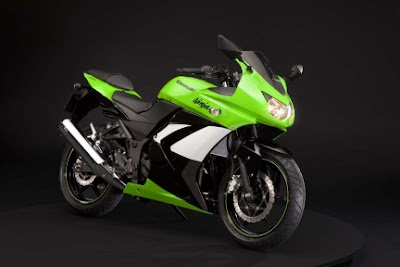The Tightwad has Made his Point
The Kawasaki Ninja 250 gas tank holds 4.8 gallons of gas, and his average off-highway gas mileage is 75 mpg. He documented and recorded his mileage from every single gas fill-up receipt for eight entire months, using mileage tracker.org, and so the self proclaimed Tightwad has made his point.
How Much Money Saved in Gas? The Results
His data compares his motorcycle gas mileage at 74.4 mpg to his 97 GMC K3500 Diesel Truck at 12 mpg. The data was collected over the period of time where gas and diesel prices peaked in 2008.The price of diesel reached nearly $5.00 per gallon and the price of gas was just over $4.00 per gallon. According to his results, if he had used his truck to commute during that period of time, he would have paid $1,251 in diesel. In other words, he saved $1,251 in 220 days by riding his motorcycle, which at this point is a few hundred dollars shy of paying for itself in saved gas money!
Also worth mentioning, the insurance premium on his 2005 Kawasaki Ninja motorcycle is less than $100 per year, which is nearly one third the price of His GMC Diesel truck insurance premium which is nearly $300 per year! The excise tax on his motorcycle is a mere $5 per year! During these economically challenging times, these savings are all significant. And while life is filled with many uncertainties, I am certain the price of gas and diesel will go up again!
So, for anyone who wants to follow their dream and become a motorcyclist, whether you be "Tough Guy", "Tough Girl" "Tightwad", or something in between, be safe, be practical and enjoy the gas savings as a fill-it-up-and-forget-it commuter.
Should you be looking for a motorcycle that you can learn the basics on and keep for the long term, you have a wide variety of options. There are a number of 600-650cc bikes in the North American market that have ample power, range and size to keep a rider satisfied for many seasons. The key is to stay away from true sport motorcycles, which come along with too much power for the beginner, as well as extremely high insurance rates.
If you are not afraid of a little do-it-yourself maintenance, a Japanese motorcycle from the 1980s can be a good bet. Despite some having larger displacement engines, they also tend to be heavier, thus reducing the power-to-weight ratio into the more manageable range. They are cheap, easy to find and offer long distance comfort and pleasant ergonomics (seating position, reach to the handlebars and leg position). Parts can be harder to find, and the potential of more maintenance is almost a certainty. My first motorcycle was an early 80s Honda 750, which fit my 6'0 frame much better than a small displacement motorcycle. It allowed me to learn the basics, without tempting me with too much power, too early on for my skill set.
As I alluded to before, a bike that fits you properly is a prime consideration. No matter how much you like a bike, if your feet do not touch the ground, you are in trouble. Conversely, if you are a taller rider, a smaller bike may be too cramped. Cramped ergonomics are particularly noticeable on long distance rides and can cause serious discomfort. A bad fit on a motorcycle is a safety hazard that should be avoided.



Tidak ada komentar:
Posting Komentar